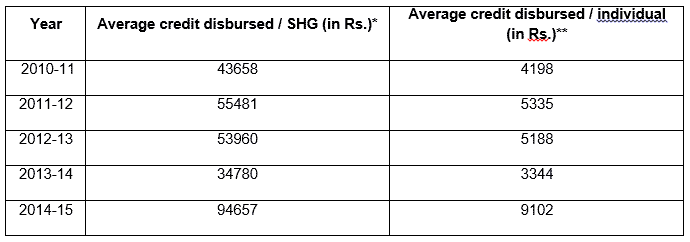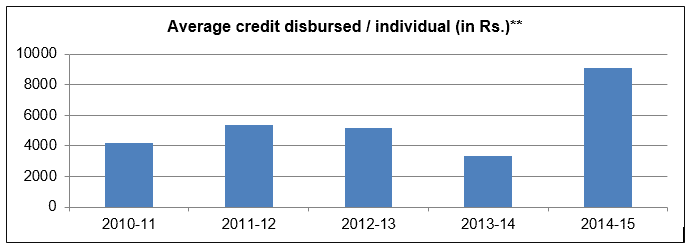Gap Analysis
General Context
The SHG sector as a whole and SBLP in particular, has been facing a number of challenges such as uneven quality of groups, unequal growth, policy contradictions, huge shortage of capacity building infrastructure, including resource material and resource persons to support the Self Help Promoting Institutions (SHPIs).
The behaviour construct of self help group (SHG) members are lacking in:
- Stabilization within SHGs.
- Pro-poor financial and credit support system.
- Market-driven and decentralized extension system.
- Diversification towards high-value enterprises.
- Technological intervention and impact assessment.
- Media-mix for technology transfer.
- Frequent educational tour/visits and interaction with other SHGs and research institutes (viii) Developing leadership skills.
- Developing leadership skills.
- Strong political will.
- New agricultural knowledge base in emerging technologies and methodologies.
West Bengal Context
There are many issues affecting the realization of full potential of SHGs in West Bengal. These are a) are internal to functioning of these groups – which is fundamental to sustain the progress through SHGs, and b) need the support and services from concerned stakeholders to cater to the various needs for their progress.
As example, credit access by the members of SHGs from the formal banking sector – a good indicator for size of livelihood venture, is very poor, not rising despite various attempts from the state government (Average credit access by SHG members ranges from Rs.3344 to Rs.9102 – chart below).
At the same time, the NPA rate for credit through SHGs in the state is less than others borrowers and consistently low in comparison to national NPA status till 2014-15, as can be seen in the following table:


Obviously the width of credit delivery though successful, does not have adequate depth. The SHGs, on account of their ability to aggregate demand, are ideally suited for cost-effective delivery of services that make livelihoods viable. Higher tier institutions of SHGs such as federations or producer companies have been used well in a few locations to support livelihoods. There are efforts by government agencies, NGOs, Cooperatives, Corporate, etc. for providing Financial Services, Training, Business Development Services including Marketing facilities, etc.
But, there are widespread observations that amply show that the households have not been able to graduate from basic micro-finance stage to micro enterprise level. There are many obvious factors. Farm related livelihoods remain vulnerable on account of low productivity, difficulties in market access for outputs, inadequate funding and unpredictable monsoon and markets. In unirrigated agriculture the prime need of farmers is that of risk management. Viability of livelihoods depends on availability of inputs and access to markets for outputs and therefore facilitating Institution should facilitate backward and forward linkages in livelihoods.
In the absence of it, utilisation of credit for livelihood improvement by the members of SHGs remains low and is really a major area of concern.
To be more precise, as written in Status of Self Help Groups in West Bengal, 2009 – 10:
- Problem of transition from savings to credit to capability,
- The overwhelming presence of dysfunctional groups,
- Problems of banking,
- Problems caused by unfair activities of microfinance institutions and individual creditors,
- Problems of marketing,
- Lack of synchronization between training and marketing,
- Absence of a lending system in which credit on easy terms for situations of distress owning to natural calamity or family disaster is available,
- Disparities between SGSY and non SGSY schemes,
- Problems of urban SHG,
- Non-availability of data, particularly with regard to non SGSY SHG,
- Lack of coordination among different government departments and agencies engaged in SHG promotion activities,
- Problems of group functioning within SHGs.





